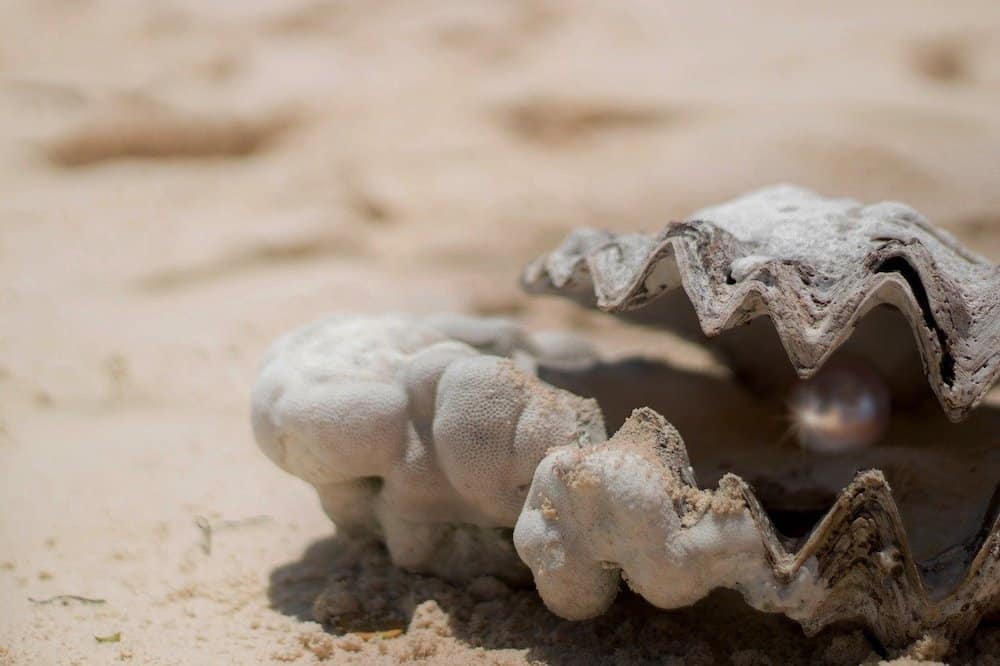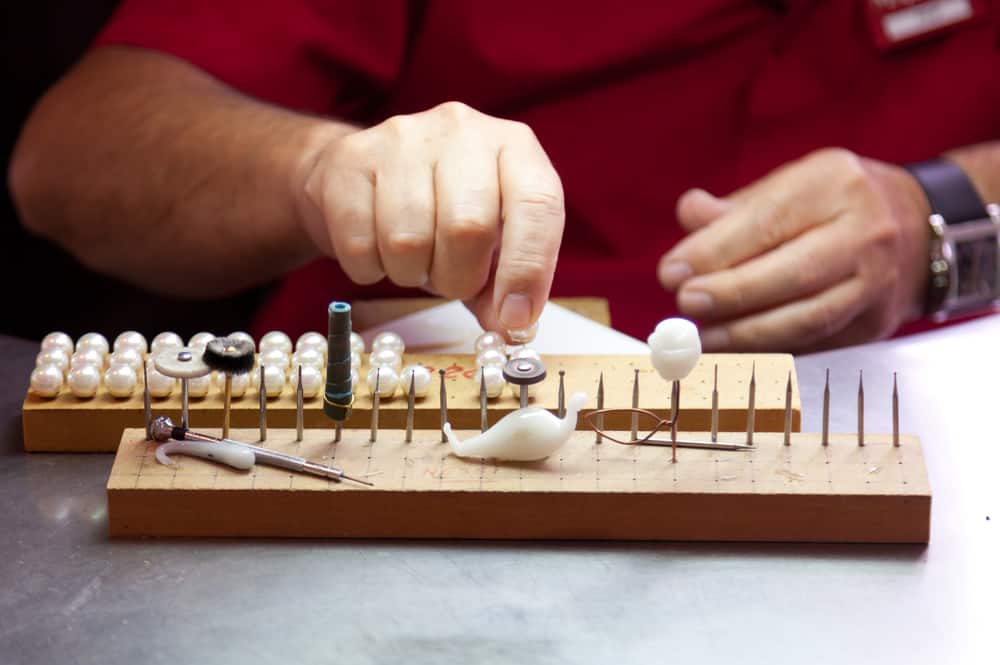There has been a lot of talk about diamonds in the last few decades around responsible and ethical sourcing, but what about other gems? Pearls are the only gemstone derived from a living creature, so can they be cruelty-free?
Pearls are made by and cultivated from oysters. While studies show that oysters do respond to stimuli – it is uncertain whether they can feel pain. So, whether pearls are cruelty-free depends on your perspective of oyster cultivation. An opposing view is that while pearls might not be cruel, they might not be ethically sourced due to how the oysters are treated.
Here, we break down what oysters are, how pearls are made naturally and in cultured environments, and cruelty-free considerations worldwide. Before we tackle cruelty-free certifications, it’s important to understand the oyster's anatomy and what goes into cultivating pearls from oysters.
Is Cultivating Pearls Ethical?
The only difference between a natural pearl and a cultivated pearl is human interference. Because of the fact that this is not naturally occurring and that a pearl is a stress response to a foreign irritant, fewer than half of the oysters will survive this process.
Conditions of Cultivating Pearls
The conditions for manually cultivating oysters can be very brutal. Oysters are often subject to changing water temperatures to stress the oyster while suspending them in cages to dip them in and out of the water.
Once pearls are created and extracted, cultivators often reuse oysters for another pearl creation cycle, and they discard any oysters that they believe to be spent.
The Rise of Eco-Friendly Pearl Cultivation Practices
However, some companies claiming to be eco-friendly pearl producers have made splashes in the pearl market because of these conditions.
These companies tend to strive for quality over quantity by taking extra care of the oysters, spacing them out, and not subjecting them to harsh conditions to speed up the process.
There is also evidence to suggest this type of pearl farming is good for the ecosystem because this kind of farming involves keeping the oysters in their natural habitat of the ocean where they can interact with sea creatures and carry out the natural order of the ecosystem.
Additionally, if oysters run their course, they are often sold to organic oyster farms and sold on the seafood market. Therefore, they’re not simply killed or discarded but find use in another market after they are done producing pearls.
If you’re interested in finding out how ethical this delicacy is in general, you can find out everything here: Is It Cruel to Eat Oysters?
What Are Cruelty-Free Pearls?
The standard meaning for cruelty-free means a product that isn’t tested on animals.
According to the US Food & Drug Association, there is unrestricted use for the terms “cruelty-free” or “not tested on animals” because “there are no legal definitions for these terms.”
According to PETA, a cruelty-free product means that neither the product itself nor its ingredients are tested on animals.
By this definition, pearls are technically cruelty-free since they do not test on living animals – but many who try to avoid cruelty-free products would still be upset about the conditions that the oysters endure.
As there is no standard or legal definition of the term – products may use the label without any proper certification. In result, some organizations (in the US and abroad) create their own guidelines and lists of cruelty-free products.
Natural vs. Cultured Pearls: Which Are Less Cruel?
All pearls are natural by definition, but the difference comes from how they their form is prompted. Natural pearls are found from oysters in the wild, whereas cultured pearls occur through human interference and assistance.
How Pearls Are Cultivated
The only way to create a pearl is to introduce a foreign irritant inside of the oyster shell. Because this only occurs naturally in about one in 10,000 occurrences, pearl producers have found a way to kickstart the pearl-making process, called “cultivating.”
To cultivate a pearl, the farmer will physically open each oyster to insert an irritant to initiate the creation of the pearl.
Do Oysters Feel Pain?
Much of the debate over whether or not cultivating pearls is ethical comes down to the debate over whether or not the oyster feels pain.
While it is not fully proven whether secreting nacre is painful, many scientists believe the response is more of an immune response that the oyster does not feel – much like the human body releasing white blood cells to fight off an infection in the body.
Cost of Natural vs. Cultured Pearls
Naturally occurring pearls were already a rare occurrence, but climate change and other forces have made these gems even rarer than before. Because of this, the main difference to the consumer comes down to cost.
A strand of pearls or even a single gem of a naturally occurring pearl will fare a much higher cost than a pearl or strand of pearls that was cultivated, even though it is essentially the same process.
So, are Pearls Cruelty-Free?
Whether or not pearls are cruelty-free is certainly a million-dollar question. According to the wide assortment of definitions that have popped, pearls are considered cruelty-free because they are not tested on animals.
However, perhaps more of a question is whether or not cultivating pearls is an ethical practice, and that answer may lie in the eyes of the beholder.
Some may say pearls are a naturally occurring process and would happen whether or not there is human interference, much like planting seeds or using grow lights to help jumpstart a garden.
On the other hand, many people believe the human interference with an animal like an oyster combined with keeping them outside of their natural environment or contained within their natural environment is not ethical and is unacceptable.
Cruelty-Free Alternatives to Pearls
If you love the look of pearls but want to ensure you’re sourcing ethically, there are some other options to consider. Here, we break down some pearl alternatives and whether or not they’re cruelty-free, vegan, and ethical.
Majorica Pearls
Majorca Pearls are a faux pearl brand based in Spain. While they do not derive their pearls from oysters, they do coat their crystal beads in a fish scale to achieve the oyster shimmer that people love.
Verdict: Not vegan, likely cruelty-free, maybe ethicalBeaded or Glass Pearls
Beaded or glass pearls can all depend on the manufacturer. More often than not, the center comes from a glass or crystal substance. However, the paint or coating used to achieve the iridescent shine is occasionally in question.
If you have doubts, try to contact the manufacturer or take it to a jeweler to determine how that pearl was made.
Verdict: Maybe vegan, maybe cruelty-free, and maybe ethical, depending on the materials. Contact the manufacturer.
Swarovski Pearls
Swarovski is known for its crystal jewelry and trinkets, and they have a line of pearl-like products. Fortunately for the ethical pearl seeker, Swarovski pearls are completely faux and not derived from oysters.
Verdict: Vegan, cruelty-free, and ethical
Vintage Pearls
If you’re okay with natural pearls, one way to ensure you are not contributing to any unethical and cruel oyster market is to wear vintage pearls.
While more expensive, vintage pearls all come from a time before humans cultivated pearls. So they are a lot more ethical.
Verdict: Not vegan, cruelty-free, and ethical
Final Thought
In conclusion, considering the general definitions across the globe of the term cruelty-free, pearls do fit in that category.
When you think of the more generalized term, it really comes down to whether or not you believe cultivating oysters is an ethical practice or perhaps finding an oyster cultivator who sticks to ethical processes is a better option for you.


